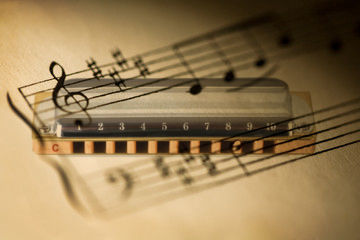
Welcome back to my lessons! Today, I want to talk about a topic that’s so important for many harmonica players: the tabs, those little diagrams that represent the draw and blow hole numbers that you have to use to play a song. There are thousands of tabs on the internet, and every day, someone asks to have tabs for new songs, because these are a pretty quick way to write the music notation. In this article, I want to explain the difference between a tablature and a real musical score; I also want to introduce you to my tabs model that I call ‘enhanced tabs’.
Whenever you start learning a new musical instrument, you need something to keep as a reference, whether it’s a piece of paper, a pdf document on your laptop, or nowadays, a picture on your smartphone: you need some tabs! These precious documents help every student to learn songs and exercises. There are many different ways to write tabs, and some of them can adopt an opposite notation that can sometimes confuse the new players. Once you develop your ear studying music, you can write your own tabs of your favorite harmonica players’ solos or of your own songs.
Let’s have a look at some different ways to notate music, and I want to start right from the harmonica tabs. You can find some quite similar tabs out there, on which the holes are indicated by numbers. Here’s an example:
If on the tabs you read this: 1+, 2-, 3+, 4-, it means you should play on harmonica hole 1 blow, then hole 2 draw, then the hole 3 blow, and finally, hole 4 draw. The same tabs can be written in this way: 1+, 2, 3+, 4; you can see that on the aspirated notes, the minus symbol is missing. This is just a way for the author to save space. I use very often this notation form my tabs.
Here’s another way the above tabs could be written: 1, 2-, 3, 4-. This time, it’s the blow notes that are written without the plus symbol, which is also a legitimate method of notation; the important thing when you write tabs is that you should clearly notate when the player should blow or draw in a harmonica hole.
What happens when we need to write bending on a tab? In this case, it likewise depends on the author. Let’s look at an example: you might see 4, 4’, 4+, 4’, 4. The apostrophe tells you that you should draw on hole 4 and play a semitone bending. If you see 3, 3’’, 2, 3’’, 3, this time, you’re supposed to play a whole-tone bend on hole 3 (double apostrophe), and I think you can guess now that a triple apostrophe on a hole number means you should bend using three-semitones.
For example, let’s take the D blues scale on the lower harmonica octave. On the tabs, you would see: 1, 2’’, 2, 3’’’, 3’’, 4+, 4.
What about overblowing? This is often notated with the letter ‘o’ close to the note – for example, you could find: 4+, 5+, 6+, 6°, 6.
As I stated earlier, there are many different ways to write information using tabs, and I can’t show them all in this lesson. However, what you’ll see here today are some very common ways to write them. Some people use circles to notate a draw note, others use arrows to indicate the player airflow direction. Why don’t people all use the same standard? I don’t really have an answer, but to me, what’s most important is that if someone writes tabs for others, they should explain how to read them. In the following images, you can see some harmonica tabs that adopt different notation styles.
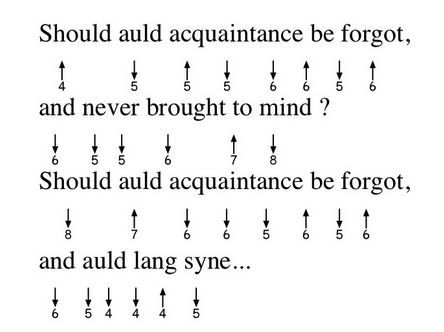
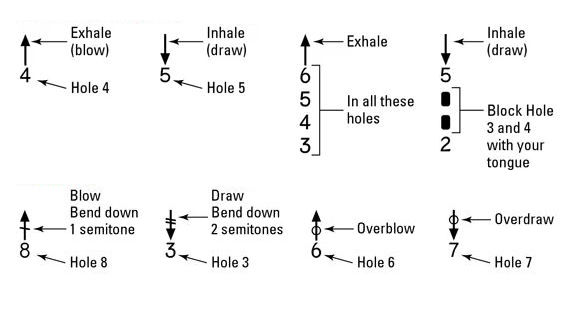
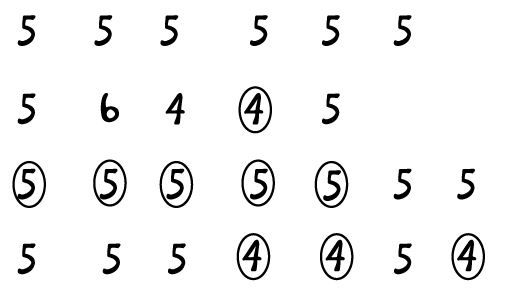
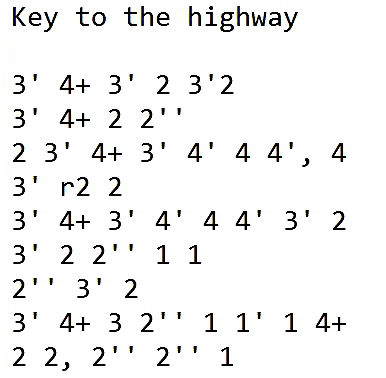
Harmonica tabs are a very fast way to write the notes of a song, a solo, or an exercise. However, they have a big drawback: the document doesn’t indicate some other information, among which the most important is the length of the notes and the pauses between them. To play the song, you therefore need to either already know it, or you need to be able to listen to it. For this reason, some tabs include additional graphic elements to give the player more information. These kind of tablature are very specific, and some of them are really complete and full of information, as you will see later on in this lesson.
Now let’s have a look at a normal musical score. This is the most complete way to represent a musical piece, as it contains all the information necessary for the performance including the tempo, tonality, length of the notes, ligature, and any other indications in detail. Of course, reading a document of this kind requires knowing the staff, learning to recognize the symbols of the notes, and everything else involved in reading music; for this reason, many harmonica players stay away from scores and prefer to use tabs. However, the musical score is the standard for all music notation, and if you can read it, no matter what instrument you play, you’ll have much more material to study and will be able to speak a common language with other musicians. There are simple one-instrument scores for soloist instruments, as well as really big scores where everything is notated on the same document and every musician can read their own part. The piano score, for example, has a double staff, one for each hand. On the same page, you’ll see two different key signatures, and the performer must read the bottom notes in a different way. This is obviously a lot more complex than reading harmonica tabs.
In the image below, you can see a complete musical score.
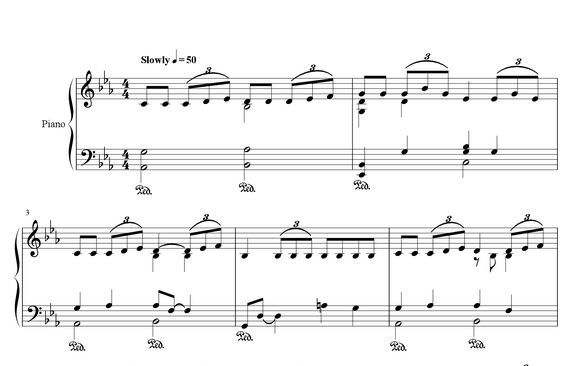
Between simple harmonica tabs and a complete score, there are some hybrid documents representing both the notes on the staff and the holes to play. This type of notation is more complete but takes a fair amount of time to be written, since there’s a lot of information being represented. You can see this type of document below.

I’ve used many of these types of tabs, and I want to tell you what happens when someone who already plays a musical instrument, and can understand musical notation, starts to play harmonica: at first, they will read just the numbers, but once they know where every note is located on the harmonica, they forget the numbers and look at the notes on the staff. When you can do this, you’ve reached a high level of knowledge of your instrument. You’ll know exactly where each sound you listen to can be played, on the fly. I encourage my students to learn to read the notes on the staff, because this allows them to practice the material without the harmonica; yes, it’s very possible to play everything in your mind or using your voice as an instrument, learning the right tempo and melodies this way.
At my online harmonica school and for my personal tabs, I use an enhanced type of document that I designed to quickly write musical notations, providing most of the information useful for the performance and indicating both the names of the notes and the holes of the harmonica to play. Reading the note names is essential to learn how to improvise and transcribe the music we listen to; only when we know exactly where each note on the instrument is located can we master the harmonica.
With these types of tabs, the musical measures are divided into 4 beats, and within each beat, you can also have a subdivision into eight notes, sixteenths, as well as triplets and other combinations. Some symbols indicate continuing the note you are playing and others how to perform the note – for example, with tremolo, vibrato, or some tongue-blocking articulations. There’s no information that can’t be written on this type of document. The following is a legend that explains how to read my personal harmonica tabs:
One plus symbol means to blow the harmonica hole.
An apostrophe means to bend the note of a half-tone.
A double apostrophe means to bend the note of a whole-tone.
A triple apostrophe means to bend the note of three steps.
A dot before the notes means to use tongue blocking articulations.
^ means playing the note with a ‘dip’ bending.
R before a note means reaching that note with a glissando effect.
Sh means ‘Shake playing’ or ‘Warble.’
Ft means the ’Flutter tongue’ technique.
P means ‘Pull technique.’
V means ‘Vibrato effect.’
Tr means ‘Tremolo effect.’
Wa means ‘Wah-Wah Effect.’
Below you can see one of these enhanced tabs, take a look and we’ll analyze them together – you’ll see just how much information it includes!

I hope to have given you some useful information about music notation. If you want, you can try to write your own tabs, creating your unique notation style. I assure you that this is a great way to learn harmonica and can also be a lot of fun! I invite you to share this page with your friends and take a look at my harmonica school page. See you next time!
Share this page with your friends!